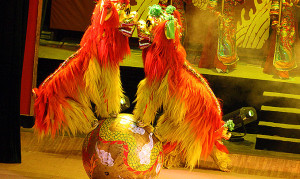 The capital city of the People’s Republic of China is the second largest city in the country, and a historical, cultural and educational center of China. Over 3000 years gives it a title of one of the oldest cities in the world, and 850 years long tradition as a capital city. Those facts considerably contribute to a cultural and a historical wealth of the city. The Forbidden City, The Great Wall, Tiananmen Square, The Chaoyang Theater, The National Centre of Performing Arts, Kung Fu, colorful paper lanterns, and Chinese pandas are just some of the symbols or associations to the city, as well as for China.
The capital city of the People’s Republic of China is the second largest city in the country, and a historical, cultural and educational center of China. Over 3000 years gives it a title of one of the oldest cities in the world, and 850 years long tradition as a capital city. Those facts considerably contribute to a cultural and a historical wealth of the city. The Forbidden City, The Great Wall, Tiananmen Square, The Chaoyang Theater, The National Centre of Performing Arts, Kung Fu, colorful paper lanterns, and Chinese pandas are just some of the symbols or associations to the city, as well as for China.
The most important cultural and historical landmark of the city is The Forbidden City, a complex of former imperial palaces built in a traditional Chinese style.
In front of The Forbidden city is the biggest square in the world, The Tiananmen Square or Gate of Heavenly Peace. In the square, there are monuments to honor Communism – Mausoleum of Mao Zedong, Monument to the People’s Heroes, The Great Hall of the People and others. Unavoidable destination is also The Summer Palace, former imperial palace for summer retreat.
Comparing to the other cities of the world, urban planing of Beijing is unique. The ring shaped roads; square infrastructure and development are expanding around the city in a wide area, far away from The Forbidden city. It greatly helped development and expansion of the city in all directions.
It is not hard to notice the perfect harmony between the ancient and modern era in this outstanding metropolis. Wangfujing is a business center full of famous stores and brands, surrounded by interesting and recognizable Beijing’s hutongs – small narrow streets or alleys full of old traditional shops, tea shops, bars etc.
Even though, Beijing has a very wide and rich history, the city is still in a process of reinventing its culture, especially since receiving an honor of hosting the Summer Olympic Games, back in 2008. Even though the accent is on modernization, Beijing is still trying to show the world its rich culture by embracing several major world religions – Daoism, Confucianism, Buddhism, Islam and Christianity. The spirit of the ancient temples can still be felt in the air, throughout the city. Jin dynasty left behind the most famous Buddhist temple – Tanzhe Temple, which dates back to the 3rd century.
One of the most special cultural spots in Beijing is the Beijing Opera, with several high – quality restaurants. Content of the shows is pretty loaded, so all of the visitors can find their own entertainment – regardless whether it is Kung Fu, some musical or dancing performance.



Leave a Reply